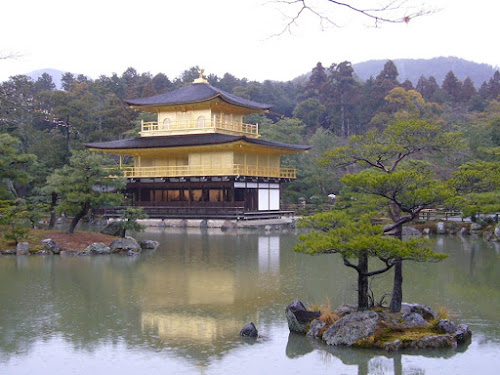Tokyo, Kobe and Kyoto
東京、神戸、京都での滞在
Free ebook「Unbeaten Tracks In
Japan」(https://www.gutenberg.org/ebooks/2184)doesn’t cover her
trip in the western Japan. I quote from another book translated by K. Kanasaka
and followed Isabella's trip.
She
returned to Tokyo and wrote that Japanese didn’t believe in any deities. Going to
shrines and temples were just a picnic, moreover a religious festival was just an En-nich
carnival. Actually, we Japanese respect deities so much, however we believe in many deities. It
is not common to dedicate to only one deity even now. Anyway, visiting shrines and temples has been fun for Japanese.
 |
| Approach to Sensouji Temple、浅草寺参道 |
 |
| Sanjya festival in Asakusa, 2016、浅草三社祭 |
無料のebook「Unbeaten Tracks In Japan」では、西日本の旅は省略されていたので、金坂清則の訳注による「完訳 日本奥地紀行」(東洋文庫)から引用し、イザベラの旅を通じて、明治時代の日本人の楽しみを追う。
イザベラは、東京に戻り、「私がこれまでに会ってきた国民のうちで日本人ほど信仰心のない国民はいない。寺社詣でと言っても行楽であるし、宗教に関わる祭りといっても縁日に過ぎない」と喝破している。日本人は神仏を敬うが、一つの宗教に没頭しないということか。とにかく、寺社詣では日本人の楽しみだ。
20th
October in Kobe、10月20日、神戸
Isabella went to Kobe by ship and
wrote about the foreign settlement which was designed by a British engineer; it was sunny and the place gave good impression, and it was way better than other
settlements in terms of how attractive they were. But it was an empty district, she
mentioned. Around one thousand foreigners lived in Kobe at that time and more
than half of them were Chinese, some of them worked as servants. On the other
hand, outside of the settlement was crowded by Japanese people and rickshaws, she said.
Ordinary Japanese were probably
unfamiliar with foreigners. We had better understand it and
perceive her views.
 |
Model of the foreign settlement in Kobe、神戸の外国人居留地模型
|
イザベラは船で横浜から神戸に行き、神戸の居留地について書く。「神戸は明るくて感じの良い居留地であるし、私がこれまで見てきた「開港場」のうちでは群を抜いて魅力がある。---外国人居留地は---美しく、規則的に区画されている。---だが、住民は一体どこにいるのか。---歩行者のいない歩道---」イギリス人が設計してきれいに作った町だが、外国人は少なかった。当時の神戸の外国人数は約1,000人で、半数以上が召使いも含めた中国人だ。ただし、居留地外は様子が違って、人や人力車がひしめいている、とある。やはり、外国人(当時は、異人さん)は近づきがたい存在なのだろう。この点を割り引いてイザベラの本を読まないといけない。
30th October in Kyoto、10月30日、京都にて
She went
to Kyoto by train and praised it; Kyoto was totally different from other
Japanese cities. There was genuine art of abundant beautiful dresses and
entertainment. Ladies were beautiful, and their hairstyles and obi-belts fascinated Isabella. The wonderful dress hid vivid color in it naturally. Children
seemed to come from pictures. Music were played everywhere. There were many
excellent tea houses and entertainment districts. In addition, this city was
surrounded by most magnificent temples, she wrote.
She said
that children were bare and ugly in northern Japan, however she praised the appearance of children in Kyoto. I was amazed because people in Kyoto enjoyed dressing up and children were also sophisticated. Living standard was so different among regions.
 |
| Japanese Kimono with an obi-belt @ my nephews wedding ceremony |
 |
| Kabuki theater Minami-za、南座 |
 |
| Entertainment district Gion、祇園の町並み |
 |
| Kinkakuji Temple、金閣寺 |
She had
a meeting with Neesima who was a founder of Doshisha University and a missionary.
She asked him what was the worst point of Japanese people. He answered immediately and clearly that they
told a lie and didn’t comply with discipline. His
answer interested her. Because she asked same question to two other government
executives who weren’t Christian, and got same answer as Neesima said.
She
mentioned that Japanese were honest and they didn’t receive extra fee so far. I
wonder if she only saw the good behavior of Japanese, because she was a VIP foreigner. I would
like to check what the truth was.
1st November in Kyoto、11月1日、京都にて
She also
admired arts and praised Japanese people. She thought that every Japanese had an
exceptional talent to cherish aesthetics. Therefore, hundreds of shops
displayed beautiful products neatly more than her expectation. Afterwards, she visited Ise Shrine by rickshaw.
イザベラは汽車で京都に行き、京都を褒める。「---京都が日本の他の都市とは違っていることが実感できた。ここは美しい装いと遊興がすべてという芸術の本場である。女性は美しく、髪形も帯もうっとりするばかりである。そのみごとな衣裳には、ハッとするような鮮やかな色がさりげなくしのばせてある。子供たちはまるで絵のようである。至る所から音楽が聞こえて来る。立派な茶屋や歓楽地もたくさんある。その上、このまちの周囲は日本におけるもっとも壮大な数々の寺院によって取り囲まれている。」と東北では裸で醜いと言っていた子供まで褒める。それほど京都では、おしゃれを楽しんで、子どもまで洗練していたのかと驚いた。地域の差が大きい。
京都では、新島襄との会談で次のように書かれている。「私が氏にあなたの国の人々の最もよくない点は何ですかと尋ねたのに対しては、間髪を入れず、「嘘をつくことと規律を守らないことです」と言い切った。好奇心をそそられる答えだった。キリスト教徒でない二人の政府高官に尋ねた時とまったく同じ答えだったからである。」イザベラは、日本人は正直で、お金も受け取らないなどと書いてきたが、特別な旅行者だから日本の良いところばかりを見てきたのかも知れない。
11月1日
京都の美術品を愛で、日本人を褒める。「---日本人は誰もが美や愛らしさを慈しんだり認識する並外れた能力を生まれつき持っているように思われる。何百とある京都の店屋には、たくさんの美しい品物が配置良く並べられているので、戸惑いを覚えるほどである。」 この後、イザベラは人力車で伊勢に向かう。
Previous
post (Visiting Ainos in Hokkaido、アイヌを訪ねる北海道の旅):
Travel
of Isabella L. Bird in 1878, part 9 イザベラバードが見た明治初期の日本(9)Next post (Go to Ise Shrine by rickshaw、人力車で伊勢神宮へ):
Travel of Isabella L. Bird in 1878, part 11 イザベラバードが見た明治初期の日本(11)
There are 12 articles about Isabella's travel in Japan. The first page:
イザベラバードの旅は全12ページの記事です。最初の記事は上記のURLです。

Comments
Post a Comment